by Specialdocs Consultants, LLC | Apr 13, 2021 | Covid-19 Updates, Patient News

As news regarding the J&J vaccine has changed significantly since our COVID-19 Vaccine Update posted on 3.24.21, we offer the following link to today’s Joint CDC and FDA Statement on Johnson & Johnson COVID-19 Vaccine.
Please continue to check the CDC website for the latest vaccine information.
The post 4.13.21 J&J Vaccine Update appeared first on Specialdocs Consultants.
by Specialdocs Consultants, LLC | Jan 1, 2021 | Patient News, Wellness

What are your 2021 Anti-Resolutions?
Year after year, the pattern rarely varies. Resolutions made, promptly followed by resolutions broken. The odds of sticking to New Year’s resolutions are, in fact, completely stacked against us, as research shows a paltry success rate of between 10 and 20%. But since the challenges of 2020 have reconfigured every aspect of daily living, 2021 may be the ideal time to reset this ritual as well. Perhaps it’s time we consider this upcoming new year, the year of the anti-resolution for dieting, exercising, eating healthier and managing stress.
We’ve asked therapists steeped in mindful eating, body positivity and resilient thinking to help reframe this perennial wish list. There are no checklists to mark off or milestones to meet, just inspiration to view yourself and the world around you through a new lens.
Instead of Dieting in 2021… Consider being more mindful about what you eat.
Replace the resolve to lose weight on a diet with a shift to mindful eating. “Keep in mind that while all diets work in the short run, there’s not a single plan that has long-term results for the majority of participants, and that’s why people make the same resolution every year,” says Judith Matz, nationally recognized speaker, therapist and co-author of The Diet Survivor’s Handbook and Beyond a Shadow of a Diet. “The deprivation that comes from dieting often leads to overeating or bingeing, setting into motion an endless cycle of frustration.”
Instead, learn to eat when you’re hungry and stop when you’re full, and choose from a wide variety of foods, including healthful ones.
Matz describes the essence of the process. “First, learn to recognize when you are just beginning to feel hungry. If you have a headache, are crabby, irritable, fatigued and low on energy, you’ve waited too long and are much more likely to overeat as a result.”
Next, think about what food would make you feel satisfied. “Sometimes a fresh apple or a raw carrot is exactly what you want, and at other times you might want ice cream or a bowl of pasta. Depriving yourself of foods you love can be counterproductive – there’s room for all types of food,” she says.
For patients with specific medical issues, such as high cholesterol, Matz notes that adjustments can easily be made while still respecting the process: a craving for ice cream can be met with a sorbet instead.
Finally, trust your body to let you know when to stop eating. While that may sound simple, Matz counsels patience, especially for chronic dieters. “It can take time to tune in to your natural cues for both hunger and satiety.”
The key is to stop having rules around food and to really listen to your body. “Ultimately it’s about having a healthy relationship with food rather than focusing solely on eating so-called healthful foods,” she says.
Moving from body image to body appreciation.
An equally important shift is changing the desire for a new body size to a genuine appreciation of the body you have. Matz defines this as “body positivity, relating to your body with acceptance and respect rather than self-criticism and shame.” It means rejecting ingrained cultural messages related to body embarrassment and weight stigma and replacing them with ones that reflect inclusiveness and self-compassion. It encourages taking pleasure in natural body changes throughout your life cycle and not putting off anything you might enjoy doing because you’re not the “perfect” size or shape.
Body positivity also empowers you to view exercise positively rather than as punishment for having the wrong body. “Unhook exercise from weight, and focus on choosing exercise for endurance, strength, flexibility, stress reduction, health, social connection or just the simple pleasure of moving your body,” advises Matz.
Finally, refrain from focusing on weight loss praise, which reinforces the mistaken belief that you can’t be happy, healthy and successful unless you’re a certain body size, says Matz.
“Consider that body positivity is a gift we can give to support family, friends and, most notably, the next generation.”
Find joy in what you do and who you surround yourself with to reduce stress.
Resolving to manage stress effectively is an oft-expressed but infrequently realized New Year’s wish. But it can be triggered by one pivotal question, says influential family therapist Debbie Gross, who asks it at every session with a new client: “What brings you joy?”
She explains, “It’s transformational in terms of moving out of the survival mode many experienced last year, and into thriving mode. When people are in crisis, they become overwhelmed by the thought that no one will meet their needs. Their only goal is to focus on how to get through this moment; their attitude is ‘If I don’t take care of me, who will?’”
To stop the “anxiety spiral” in the brain, Gross recommends the “5, 4, 3” grounding exercise for staying in the present: “Focus on five things you can see, four things you can hear and three things you can feel, either physically or emotionally.”
And while it’s all too easy to devolve into perpetual doom and gloom against a backdrop of unceasing anxiety, Gross says we have a choice – Eeyore or Tigger?
“We can wake up each day just waiting for the next problem to come our way, or we can look at the world with more of a ‘beginner mind’ that recognizes small, everyday miracles,” she says. “It takes real work for some to switch the channel in their brain to that mindset, but the difference it makes is astounding.”
The post New Year’s Resolutions Are So 2020! appeared first on Specialdocs Consultants.
by Specialdocs Consultants, LLC | Jan 1, 2021 | Patient News, Staying Active, Wellness

A Winter Workout Routine Will Prepare You For Life After COVID
Exercise will reduce pain, improve function and mobility, lower blood pressure and blood sugar, decrease risk of chronic illness and death from heart disease and many forms of cancer, enhance mood and focus, and may even help reduce your risk of contracting COVID-19.
Despite those compelling benefits, only 5% of us stick to an exercise regimen. With months of staying close to home base ahead, we asked national exercise expert Dr. Josh D’Angelo, PT, of MovementX to help us beat the odds and emerge from our winter cocoons fitter, stronger and more limber than before.
“Recent research has shown that even a little bit of exercise and movement is beneficial in improving your movement, health and life,” says Dr. D’Angelo. “We start with a focus on functional strength training exercises because it provides the best protection against future injury and helps with everything from mobility to balance. To maximize your gains, we encourage supplementing with 15-20 minutes of aerobic exercise, such as walking briskly, riding a stationary bike, dancing … or anything that gets you moving and you enjoy! And remember, every little bit of movement helps.”
Following are some ways to get started, from MovementX’s “AgeProof Your Body” program:
Work toward repeating three complete sets of these fundamental exercises: squats, pushups and abdominal strengthening for your core. Start with 5-8 repetitions each, and build weekly. Rest, repeat.
- Squats. Focusing on lower body and core strength, this is one of the most functional activities and will also get your heart rate going. Proper mechanics are important.
-
- Stand up straight, feet shoulder width apart.
- Slowly bend knees and drop your hips backward to sit in chair. Rise and repeat.
- Pro Tip: Push energy down in your heels and into the midfoot – you should be able to wiggle your toes, and you should not feel discomfort in your knees or back.
- Advanced: Add load (dumbbells or household objects) or vary your speed as your strength and endurance improve. Adding repetitions can also increase the challenge
- Pushups. These are challenging, but start with this beginner position and perform 5-8 repetitions until you can advance to a lower position and more reps.
-
- Start by standing 18-24 inches away from a wall. Extend your arms and place your hands on the wall, shoulder width apart. Lean toward the wall, keeping your arms straight
- Bend your elbows, allowing your body to come closer to the wall – let your chest lead, and keep your body straight.
- Push away. You should feel this in your chest, shoulders and core.
- Advanced: How low can you go? As you progress with the wall pushup, start with your feet farther away from the wall. Even lower? Position your hands on a sturdy chair for a lower incline. Lower? Go to the floor on your mat, starting with your knees set on the floor. The lowest is going for the full pushup position with only your hands and toes touching the floor.
- Abdominals Series. Core strength is key to developing functional fitness that helps prevent injuries, reduce back pain and make your daily activities easier to accomplish.
- Setup: Lie on your back with knees bent, feet on floor, and arms by your sides. Your lower back should not be arched at all during this exercise; push it down into the floor to tighten abs.
- Slowly bring knees up toward your chest as you bend your elbows to let your hands meet your knees (at the edge of the thigh).
- Push your hands into your thigh just where it meets your knee, pressing your hands up and toward the ceiling. Continue to do this for 20 seconds. Make sure to breathe! Work your way up to holding for 30 seconds.
The post Start 2021 off Right by Sticking to your Winter Exercise Plan appeared first on Specialdocs Consultants.
by Ivan | Oct 12, 2020 | Medical Conditions, Patient News
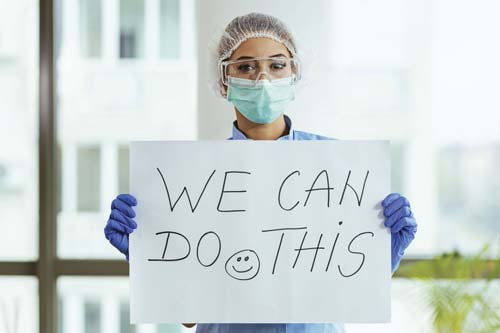
An Epidemiologist Separates Fact from Fiction and Offers Hope for the Future
Epidemiologists seek to learn why, how and when some people contract diseases when others don’t. Their findings are used to help monitor public health status, develop new medical treatments and disease prevention efforts, and provide an evidence base to healthcare and policy leaders.
Whether you feel the coronavirus is receding or set to surge, that testing is plentiful or inadequate, or that cases are reported as too high or too low may vary considerably based on where you live and your political leanings.
For an objective, no-spin perspective, we checked in with Jodie Guest, PhD, an epidemiologist at Emory University in Atlanta. Dr. Guest’s life’s work is studying the distribution, causes, prevention and control of diseases in populations.
Her answers to some of today’s most important questions about COVID-19 are below. Please note these reflect the situation mid-September…check our website for further updates.
Q: Are we seeing a slowdown in the number of new COVID-19 cases in the U.S.?
Dr. Guest: The number of new cases has, fortunately, plateaued or slowed down, but in many places the plateaus reflect substantially higher numbers than were reported in April, when everyone was still staying home. My concern is with schools and businesses reopening and less willingness to follow safety guidelines, the numbers may creep back up.
Q: What sites do you trust for accurate reporting on COVID-19?
Dr. Guest: I compare numbers from Johns Hopkins, Centers for Disease Control (CDC) and Worldometer to see if they match.
Q: What is the significance of the latest report from the CDC that just 6% of coronavirus deaths to date have COVID-19 as the only cause of death?
Dr. Guest: It’s not at all surprising for two reasons. One is that more than 60% of Americans have an underlying condition, such as obesity or diabetes. The risk of complications and hospitalization for people with two to three underlying conditions who contracted the virus is up to five times greater than for people with no [underlying] conditions. Second, death certificates list everything that may have contributed to mortality, including comorbid conditions and conditions caused by COVID-19 such as pneumonia. This does NOT mean that any of the more than 200,000 people who had heart disease or diabetes as an underlying condition didn’t actually die of COVID-19.
Q: Why are people of color and Latinos at greater risk of death from COVID-19?
Dr. Guest: This is not about a genetic risk of death. It’s driven by multiple factors, including a higher incidence of underlying conditions, less access to proper healthcare, greater risk of infection at the workplace and crowded living conditions that preclude social distancing.
Q: What is your take on the revised CDC guidelines that say testing for people who have been exposed to COVID-19 should be limited to those with symptoms?
Dr. Guest: Many of us in the public health community feel very strongly that we need to be testing asymptomatic people. From a public health perspective, more testing of asymptomatic people, not less, must be done to control the virus. NOTE: As of 9.18.20, CDC guidelines were revised again to state: “if you have been in close contact, such as within 6 feet of a person with documented SARS-CoV-2 infection for at least 15 minutes, and do not have symptoms, you need a test.”
Q: What are the relative risks of activity as we move forward?
Dr. Guest: There’s so much variation based on how carefully an activity is done, but there are four good rules that apply to all: Outside is safer than inside, shorter time is safer than longer, small groups are safer than bigger, and distance is safer than closeness.
Q: How might COVID-19 affect the epidemic of flu we see annually?
Dr. Guest: If we take COVID-19 prevention measures seriously – masking, social distancing, handwashing – we could have a light flu season. If we don’t, COVID-19 will make it worse. The good news is that this has already spurred many people to get their flu shots.
Q: Any other silver linings you’re seeing?
Dr. Guest: For the first time, we are having a national conversation around health disparities and inequalities. We might actually come to a reckoning and take corrective action, and that would be spectacular.
Q: What is most important for people to know about getting back to normal?
Dr. Guest: Eventually we’ll have a vaccine but we’re not going to eliminate COVID-19 completely. However, there needn’t be this level of impact on our society. I can’t emphasize enough that we have control over how this virus spreads. We need strict guidelines and most importantly, a social contract with everyone in your community. This may be the first time many of us are asking “What are we willing to do for each other?” I hope we can all rise to the challenge.
When considering whether it is safe to resume an activity, there is much variation based on how carefully an activity is done. Additional details are provided in the infographic below, courtesy of www.covid19reopen.com
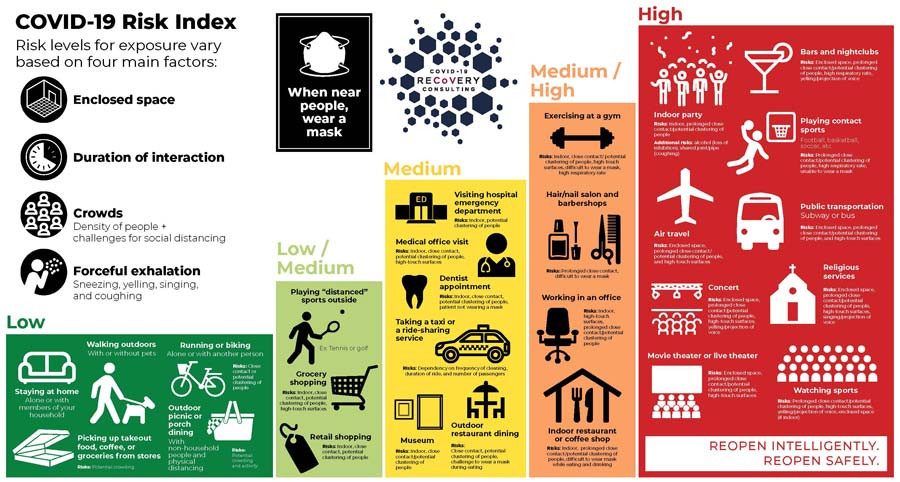
The post Can We Co-Exist with COVID-19? appeared first on Specialdocs Consultants.
by Ivan | Oct 12, 2020 | Patient News, Wellness

Finding Peace Through Mindfulness and Meditation
Mindful, compassionate, serene, happy: emotions that have been in short supply during the pandemic but can be beautifully restored to those who embrace the chance to learn the time- honored practice and art of meditation. For many, it is as easy as downloading the Headspace app on their smartphone, receiving a seamless introduction to a technique the company describes as “rooted both in ancient history and modern science.”
There’s an App For That
Meditation has been practiced for over 3,000 years, and its benefits, improving well-being, helping eliminate insomnia, enhancing focus, decreasing stress, and reducing blood pressure, among many others, have been studied for decades.
But the real democratization of meditation may have been ushered in by the proliferation of apps like Calm, Buddhify, Insight Timer and Simple Habit. Since its 2010 debut, global leader Headspace has been downloaded more than 65 million times, a number that has steadily risen during the coronavirus crisis.
Dr. Megan Jones Bell, the company’s chief science officer, reports a tenfold increase in those starting the “stressed” meditation and a twelvefold increase in “reframing anxiety at home” users from mid-March to mid-May of 2020.
Getting Started
First, choose a time to meditate, and consistently make it part of your daily routine. Find an uncluttered, quiet spot where you won’t be disturbed. Make yourself comfortable in a chair or on the floor with a pillow behind you, close your eyes and allow yourself to let go. It’s natural to wonder, “Am I doing this right?” The experts at Headspace offer some gentle guidance:
- If your body is fidgeting or your mind keeps constantly chatting, you may want to walk away from the feeling. Instead of giving up, just write off the first few minutes and give your mind time to slow down. It’s not time wasted, but time spent training the mind.
- Dozing off occasionally during the first few weeks of meditation is normal. If it keeps happening, try a different time of day, sit up a little straighter or splash a little cold water on your face before you meditate.
- You may feel all sorts of unpleasant emotions, such as impatience, irritation and rage. Don’t suppress them, but give them the space to arise, unravel and ultimately fall away. Do the same if you’re fixated on a particular worrisome thought, or if you’re experiencing sadness. Acknowledge the feeling, even shed a few tears, and keep meditating.
- If you find yourself planning incessantly in a way that is unproductive and unhealthy, let those thoughts go and come back to your focus – a breath, an image, a way that is unproductive and unhealthy, let those thoughts go and come back to your focus – a breath, an image, a sound.
- Find the sweet spot between pushing yourself too hard and not applying enough focus. You may have a certain idea of what meditation should be, but it’s important to get out of your own way and give the experience room to breathe.
More Than One Way to Meditate
More than a dozen different types of meditation are taught, including:
- Guided: Form mental images of places or situations you find relaxing.
- Mantra: Silently repeat a calming word, thought or phrase to prevent distracting thoughts.
- Mindfulness: An increased awareness and acceptance of living in the present moment; observe thoughts and emotions, but let them pass without judgement.
- Calming: Cultivate a quieter, more peaceful state of mind and improved concentration.
- Insight: Set an intention to develop qualities such as wisdom and compassion.
- Body scan: Sync body and mind by performing a mental scan and paying attention to any discomfort or tensions.
- Visualization: Focus on a mental image.
- Loving kindness: Direct positive energy and goodwill to yourself and then to others.
- Resting awareness: Let thoughts simply drift away.
- Zen: Focus on following the breath to foster a sense of presence.
- Chakra: Bring the body’s core centers of energy into balance.
The post Let It Go: The Ancient Art of Meditation appeared first on Specialdocs Consultants.
by Ivan | Oct 12, 2020 | Nutrition, Patient News
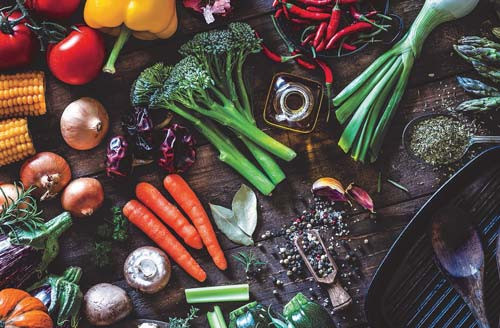
What’s the Beef With Red Meat?
It’s long been the case that provocative headlines, unexpected findings and misinformation travel far faster than conventional wisdom, especially in the internet age. Even respected medical journals like the Annals of Internal Medicine can become caught in a crossfire of disagreement, as occurred last year when a controversial nutritional study by the NutriRECS Consortium concluded that three servings of red and/or processed meat weekly resulted in a very small increased risk of cancer or heart disease.
NutriRECS further suggested that the evidence surrounding potential harm from regular consumption of red meat was weak, and therefore people needn’t abstain from eating it for health reasons.
So misleading was the journal’s press release headline, “New guidelines: No need to reduce red or processed meat consumption for good health”, that the entire study was offered as a cautionary tale at the most recent Menus of Change conference, an influential initiative on plant-forward eating from the Harvard T.H. Chan School of Public Health and the Culinary Institute of America.
A panel headed by Walter Willett, MD, professor and past chairman of the department of nutrition at the Harvard School of Public Health, dissected why a message that flew in the face of decades of research and established guidelines from the American Heart Association and the World Cancer Research Fund, made its way into the mainstream.
According to Dr. Willett, the major flaw was the authors’ decision to disregard numerous studies done over the years regarding red meat and health as “weak evidence” because they weren’t based solely on randomized clinical trials. While these are the gold standard of scientific research, the reality for nutrition studies can be different.
“There are no double-blinded, placebo-controlled trials of red meat and its links to cardiovascular disease or cancer,” explained Dr. Willett. “It’s not really possible to get this kind of study because people won’t stay on specific diets for years to track and compare.”
The result was elimination of influential studies and meta-analyses clearly pointing to increased risk of disease for meat eaters. This included a pivotal 2015 Harvard School of Public Health study of more than 121,000 individuals followed for an average of 26 years that showed every daily serving of processed meat was associated with a 13% higher risk of death from all causes; processed red meat increased the risk to 20%. A 2019 meta-analysis in the Annals itself showed that reducing processed red meat by three servings per week decreased the incidence of diabetes by 22%; lowered mortality from cardiovascular disease by 10% and from cancer by 7%; and decreased overall mortality by 7%.
“These statistics alone could have been the basis for a blockbuster drug,” asserted Dr. Willett.
Additionally, as came to light after the study was published, the authors’ ties to food industry groups were not accurately disclosed. In January, the journal issued a correction detailing those connections, but the panel’s experts were concerned that the damage had been done, and the study’s misleading headlines had negatively affected public acceptance of traditional nutritional guidance.
“The global consensus remains unchanged: largely replacing red meat with plant protein sources and (optionally) modest amounts of fish, poultry and dairy foods will reduce the risk of coronary heart disease, diabetes and premature death,” said Dr. Willett.
Beyond the Burger: What’s Next in Plant-Based Alternatives
Also featured at Menus of Change was a look at the growing American appetite for alternative proteins. The trend, kick-started by the popularity of plant-based burgers, intensified during the pandemic as consumers sought what they perceived as healthier foods produced in safer, sterile environments. Note: plant-based items are not always nutritionally sound, so please check the labels carefully when these products become available.
Coming soon:
- Plant-based ground meat, sausages, deli slices, chicken tenders, even cookie dough
- Plant based seafood, including tuna, crab cakes, fish burgers, eel and shrimp
- Egg substitutes and oat-based dairy products
- Lamb substitutes using organic compounds to replicate the earthy taste
- Cell-based seafood and cultured meats grown from the cells of fish and animals
“Plant proteins are becoming the growth story of the decade, on the cusp of replacing fish and seafood as the fourth-most-popular protein in America.”
— Zak Weston, The Good Food Institute
The post How Red Meat Went from Taboo to Acceptable and Back Again appeared first on Specialdocs Consultants.




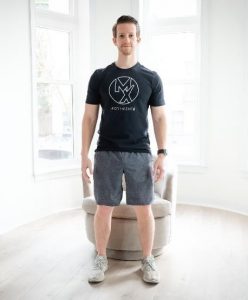
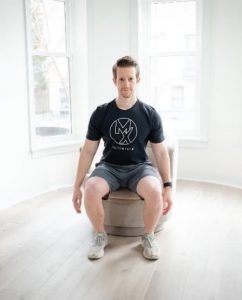
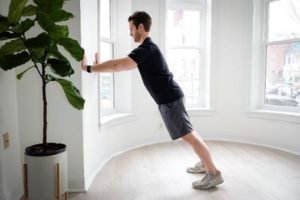

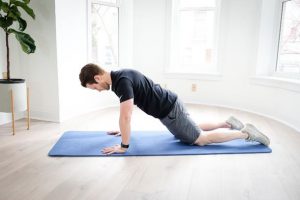
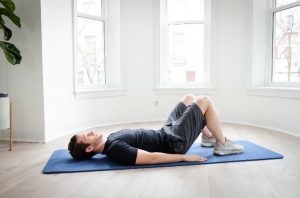
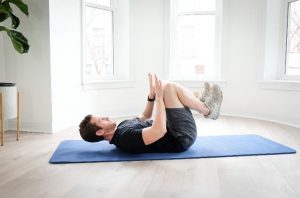




Recent Comments